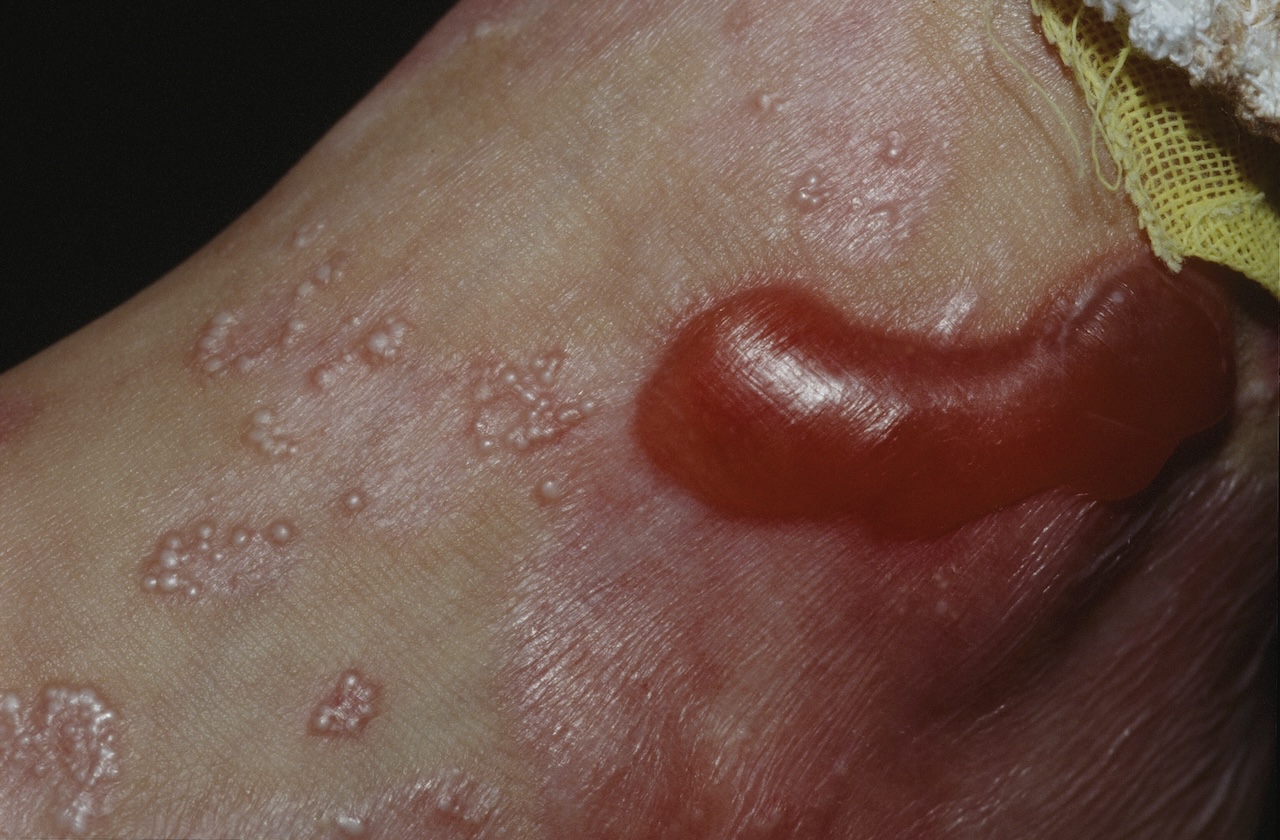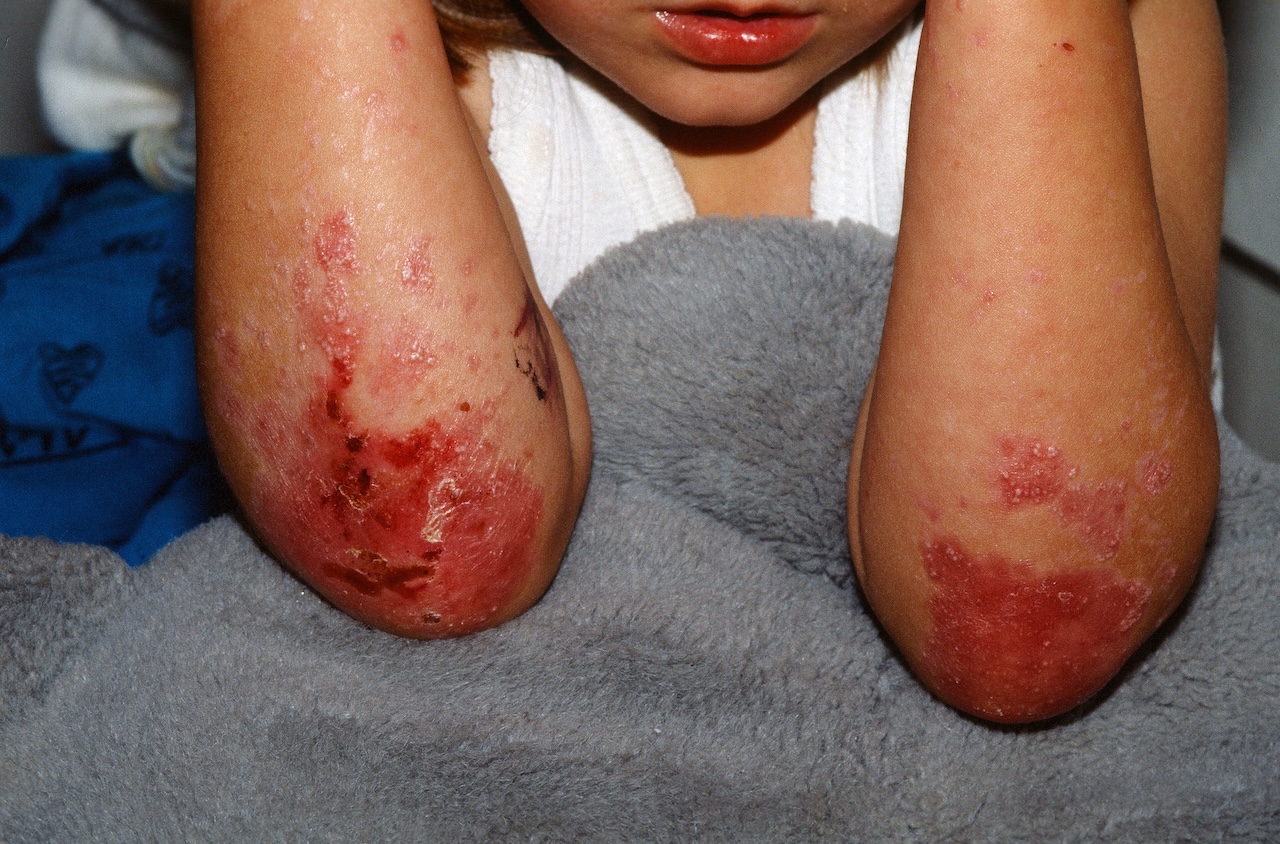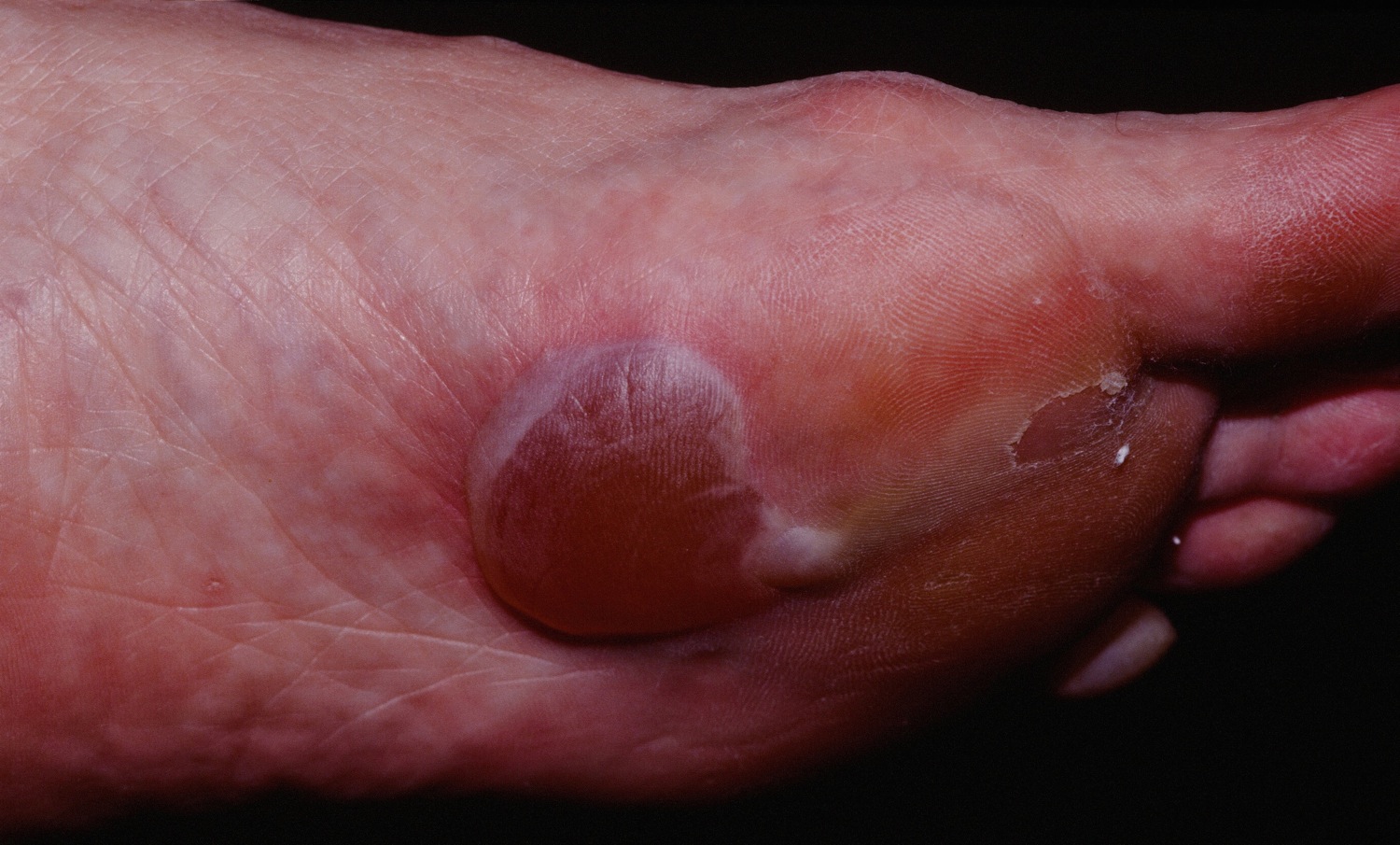
Bulla, erosions, milia and scarring are all typical findings in Epidermolysis bullosa.

Bulla, erosions, milia and scarring are all typical findings in Epidermolysis bullosa.
Epidermolysis bullosa simplex (EBS) is a chronic vesicular disorder with characteristic manifestations, from birth to infancy, of intraepidermal vesicle and milia formation on the hand, elbow, or knee due to minimal trauma.
EBS is sub-categorized by its clinical manifestation into the following:
The generalized subtype of EBS (Koebner) is characterized by generalized blistering without clustering.
The localized type of EBS is the mildest form of the subtypes that involves easy development of vesicles on the palms and soles from minimal mechanical trauma. According to molecular genetic studies of EBS, there are mutations in KRT5 and KRT14, which contribute to skeletons on hemidesmosome in keratinocytes located in the basal layer near the dermo-epidermal junction. Mutations in each subtype of EBS vary in location and severity.
This is the most severe form of EBS, with blistering that is extensive and widespread, often appearing at birth.
This is a rare autosomal recessive variant, with blisters appearing at birth or shortly thereafter.

The elbows are commonly affected in epidermolysis bullosa (EB) due to the skin's inherent fragility and the presence of bony prominences at the elbows, making them vulnerable to friction and trauma.

Weber-Cockayne EBS. Weber-Cockayne is the mildest form of EBS. Patients develop blisters on the palms and soles from minimal mechanical trauma.